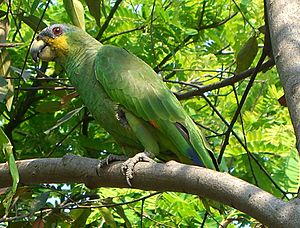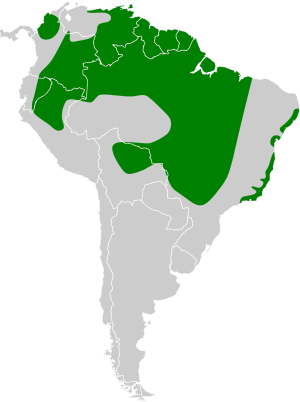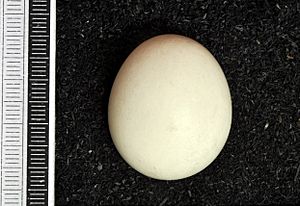Orange-winged amazon facts for kids
Quick facts for kids Orange-winged amazon |
|
|---|---|
 |
|
| A. a. amazonica, Colombia | |
 |
|
| A. a. tobagensis, Tobago | |
| Conservation status | |
| Scientific classification | |
| Genus: |
Amazona
|
| Species: |
amazonica
|
 |
|
| Synonyms | |
|
Psittacus amazonicus Linnaeus, 1766 |
|
The orange-winged amazon (Amazona amazonica) is a big, colorful amazon parrot. People also call it the orange-winged parrot or loro guaro. This amazing bird lives in tropical South America. You can find it from Colombia, Trinidad and Tobago all the way south to Peru, Bolivia, and central Brazil.
These parrots love living in forests and open areas. Even though there are many of them, some people hunt them. They are sometimes seen as pests by farmers. Also, many are caught to be sold as pets. Some orange-winged amazons have started new homes in Puerto Rico and Tenerife in the Canary Islands.
Contents
About the Orange-Winged Amazon
The orange-winged amazon was first officially described in 1766. A Swedish scientist named Carl Linnaeus gave it its first scientific name. He put it in a group with other parrots. Later, in 1830, it was moved to the Amazona group. This group now has about 30 different parrot species. This parrot is considered a single species, meaning it does not have different types or subspecies.
What Does It Look Like?
The orange-winged amazon is mostly green. It is about 33 cm (13 in) long. It usually weighs around 340 g (12 oz).
Its head has blue and yellow feathers. The amount of blue and yellow can be different for each bird. The top part of its beak is partly gray and partly dark gray. When it flies, you can see bright orange feathers in its wings and tail. Both male and female parrots look the same.
Behavior and Habits
Diet and Feeding Habits
Orange-winged amazons are very noisy birds. They make loud, high-pitched screams. They eat many different things. Their diet includes fruits, seeds, nuts, and blossoms. They also enjoy leaf buds and berries. Sometimes, they eat fruits from palm trees. They might even snack on cocoa, mangoes, and oranges.
These parrots often gather in large groups to sleep. They roost together in palm trees and other big trees. You can see many of them flying to these spots at sunrise and sunset. They are also becoming common as wild birds in places like Miami, Florida and London, England.
Reproduction and Life Cycle
Orange-winged amazons build their nests inside holes in trees. The female parrot usually lays three or four white eggs. She sits on the eggs for about 26 days to keep them warm. The baby parrots, called chicks, leave the nest about 60 days after they hatch.
These parrots have also been seen in Tenerife in the Canary Islands. There, they have successfully bred with other types of parrots. They have even tried to breed with monk parakeets and rose-ringed parakeets. Sometimes, they even join in with the monk parakeets' unusual nest-building.
See also
 In Spanish: Loro guaro para niños
In Spanish: Loro guaro para niños



